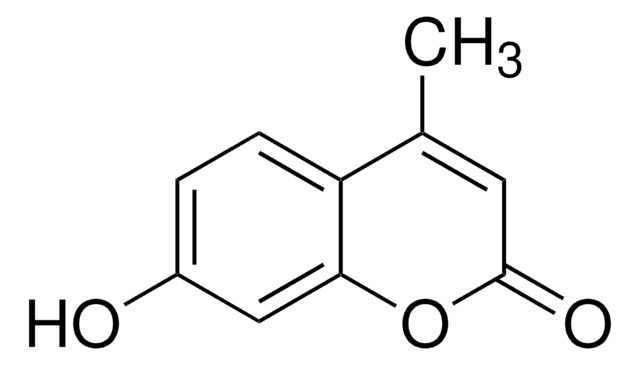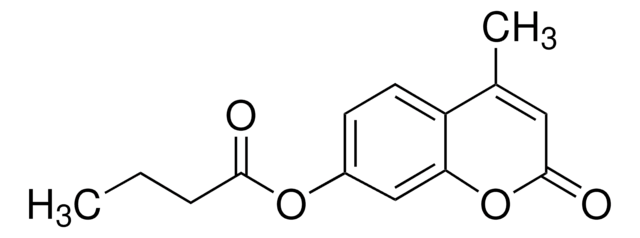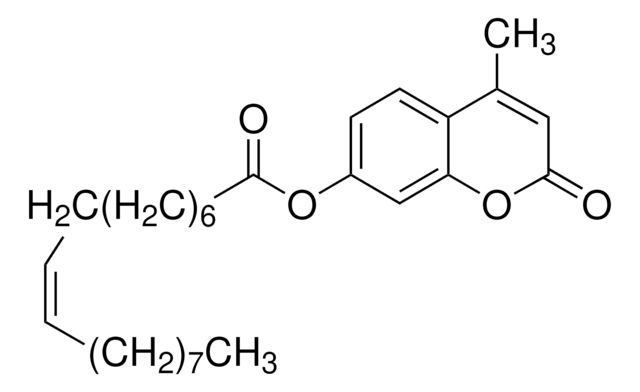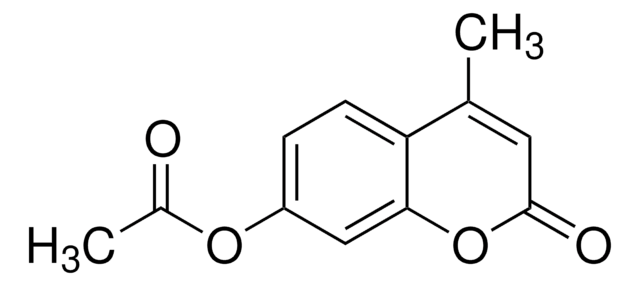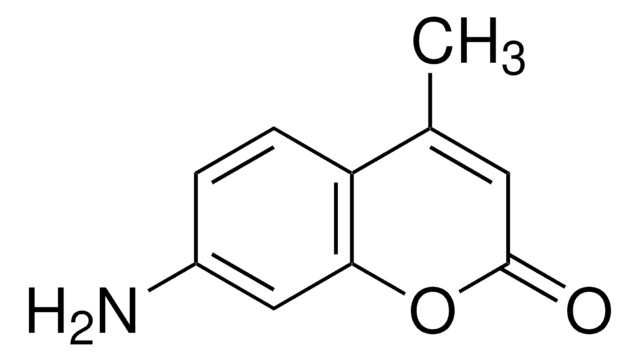U0383
Umbelliferyl Arachidonate
ethanol solution
Sinónimos:
5Z,8Z,11Z,14Z-Eicosatetraenoic acid 2-oxo-2H-1-benzopyran-7-yl ester, 7-Hydroxycoumarinyl Arachidonate
About This Item
Productos recomendados
biological source
synthetic (organic)
Quality Level
assay
≥98% (HPLC)
form
ethanol solution
technique(s)
immunofluorescence: suitable
solubility
DMSO: soluble 25 mg/mL
DMF: soluble 50 mg/mL
aqueous buffer: slightly soluble
shipped in
wet ice
storage temp.
−20°C
SMILES string
CCCCC\C=C/C\C=C/C\C=C/C\C=C/CCCC(=O)Oc1ccc2C=CC(=O)Oc2c1
InChI
1S/C29H36O4/c1-2-3-4-5-6-7-8-9-10-11-12-13-14-15-16-17-18-19-28(30)32-26-22-20-25-21-23-29(31)33-27(25)24-26/h6-7,9-10,12-13,15-16,20-24H,2-5,8,11,14,17-19H2,1H3/b7-6-,10-9-,13-12-,16-15-
InChI key
SFTGFGOBCQCZDY-DOFZRALJSA-N
Application
Biochem/physiol Actions
Preparation Note
signalword
Danger
hcodes
Hazard Classifications
Eye Irrit. 2 - Flam. Liq. 2
Storage Class
3 - Flammable liquids
wgk_germany
WGK 2
flash_point_f
57.2 °F - closed cup
flash_point_c
14 °C - closed cup
ppe
Eyeshields, Faceshields, Gloves, type ABEK (EN14387) respirator filter
Elija entre una de las versiones más recientes:
¿Ya tiene este producto?
Encuentre la documentación para los productos que ha comprado recientemente en la Biblioteca de documentos.
Nuestro equipo de científicos tiene experiencia en todas las áreas de investigación: Ciencias de la vida, Ciencia de los materiales, Síntesis química, Cromatografía, Analítica y muchas otras.
Póngase en contacto con el Servicio técnico